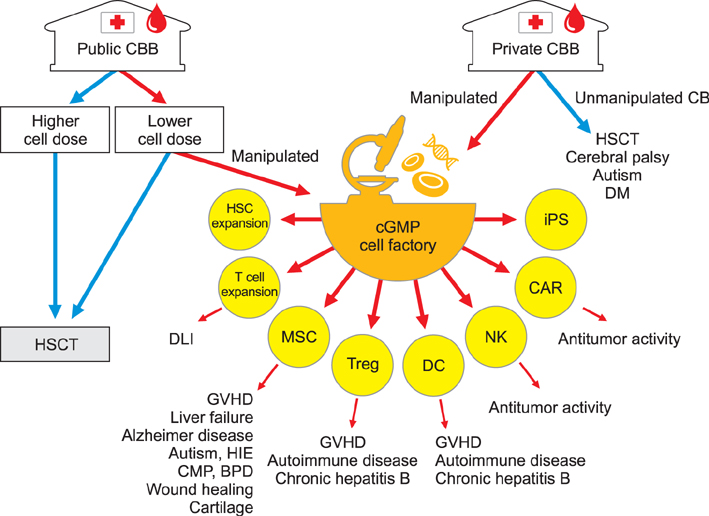Blood Res.
2017 Sep;52(3):153-156. 10.5045/br.2017.52.3.153.
The role of cord blood banks in the cell therapy era: future perspectives
- Affiliations
-
- 1Department of Pediatrics, Hanyang University Medical Center, Seoul, Korea.
- KMID: 2390974
- DOI: http://doi.org/10.5045/br.2017.52.3.153
Abstract
- No abstract available.
MeSH Terms
Figure
Reference
-
1. Lee YH, Kwon YH, Hwang K, et al. Analysis of stored and transplanted cord blood units from KoreaCORD: reappraisal of banking guidelines and selection strategy. Transfusion. 2013; 53:123–127.
Article2. Ballen KK, Verter F, Kurtzberg J. Umbilical cord blood donation: public or private. Bone Marrow Transplant. 2015; 50:1271–1278.
Article3. Lee YH, Choi KV, Moon JH, et al. Safety and feasibility of countering neurological impairment by intravenous administration of autologous cord blood in cerebral palsy. J Transl Med. 2012; 10:58.
Article4. Berglund S, Gertow J, Uhlin M, Mattsson J. Expanded umbilical cord blood T cells used as donor lymphocyte infusions after umbilical cord blood transplantation. Cytotherapy. 2014; 16:1528–1536.
Article5. Chen X, Wang C, Yin J, Xu J, Wei J, Zhang Y. Efficacy of mesenchymal stem cell therapy for steroid-refractory acute graft-versus-host disease following allogeneic hematopoietic stem cell transplantation: a systematic review and meta-analysis. PLoS One. 2015; 10:e0136991.
Article6. Brunstein CG, Miller JS, McKenna DH, et al. Umbilical cord blood-derived T regulatory cells to prevent GVHD: kinetics, toxicity profile, and clinical effect. Blood. 2016; 127:1044–1051.
Article7. McKenna DH Jr, Sumstad D, Kadidlo DM, et al. Optimization of cGMP purification and expansion of umbilical cord blood-derived T-regulatory cells in support of first-in-human clinical trials. Cytotherapy. 2017; 19:250–262.
Article8. Marek-Trzonkowska N, Myśliwiec M, Dobyszuk A, et al. Therapy of type 1 diabetes with CD4(+)CD25(high)CD127-regulatory T cells prolongs survival of pancreatic islets - results of one year follow-up. Clin Immunol. 2014; 153:23–30.
Article9. Mehta RS, Shpall EJ, Rezvani K. Cord Blood as a Source of Natural Killer Cells. Front Med (Lausanne). 2016; 2:93.
Article10. Kayserova J, Vcelakova J, Stechova K, et al. Decreased dendritic cell numbers but increased TLR9-mediated interferon-alpha production in first degree relatives of type 1 diabetes patients. Clin Immunol. 2014; 153:49–55.
Article



